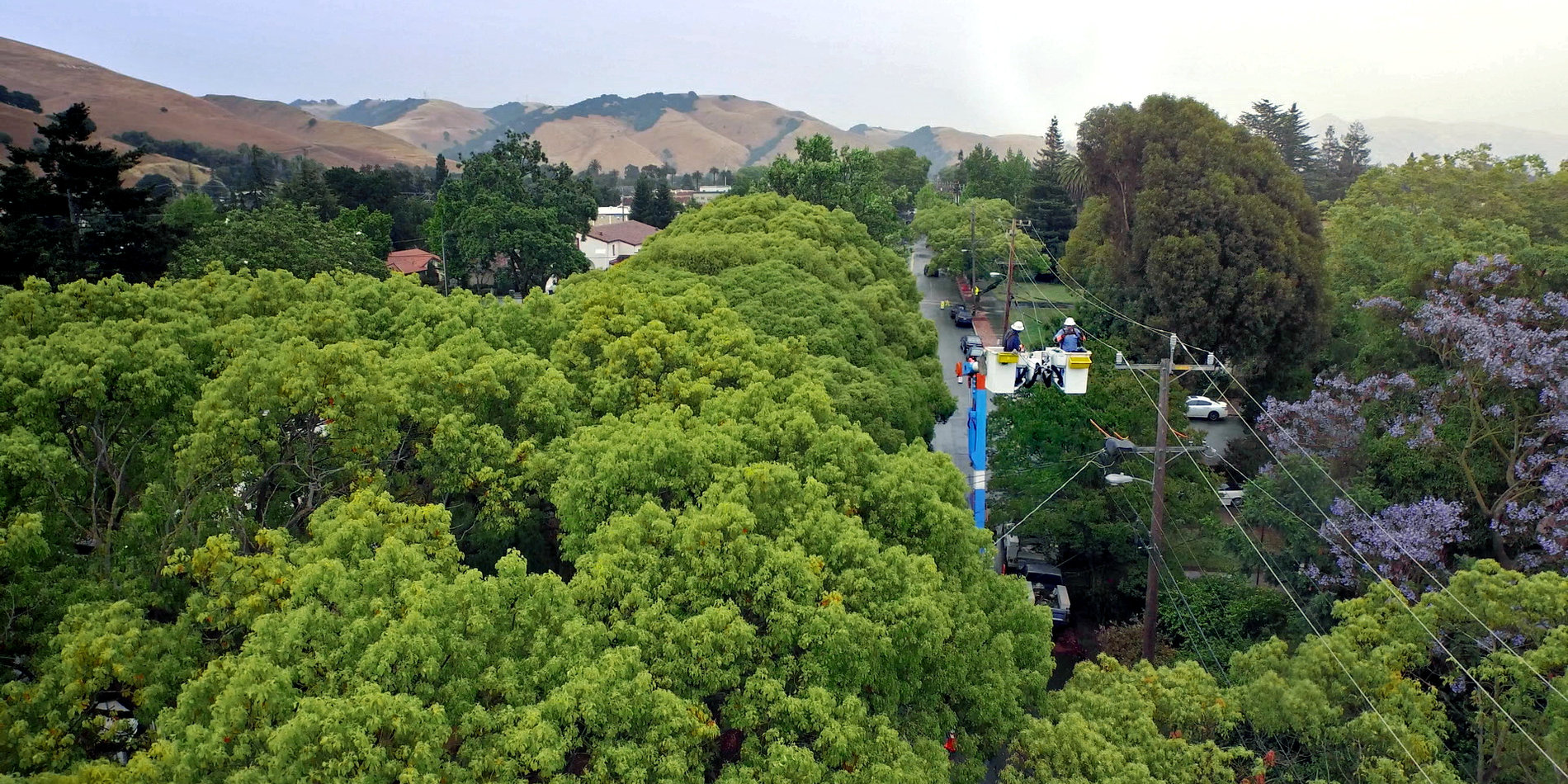Tree Assessment Protocol

Vegetation, typically trees, creates an ignition hazard relative to utility equipment when contact occurs with power line equipment and / or conductors and create alternative pathways for electricity – called faults - to travel along other than the conductor. These faults can occur between different phases of the conductors, called line-to-line, or between the conductor and the ground, called line-to-ground, and in both instances create an ignition potential where sparks could be created that would lead to a catastrophic wildfire.
A core control for this failure mode is the use of vegetation management programs to keep trees, limbs, and branches away from powerlines and electric equipment and keep our systems and communities safe. While some intrusions can be relatively straightforward to identify – such as tree limbs or branches near or within contact of conductors – there are certain instances where trees may be further away from our lines but if they were to fall, pose a risk to creating contact with the conductors or poles.
Accordingly, identification of dead or diseased trees is a critical element of utility vegetation management programs, and utilities have developed dedicated processes, tools, and software to standardize and organize data collection and evaluate an individual tree’s likelihood of failing and supplies instruction of whether to abate (remove) or not abate the tree. However, the current tree assessment process faces multiple hurdles in the development and deployment of consistent review of hazard trees:
- High Level of Expertise Required – Experience in forestry and understanding of tree mortality is required to identify failure modes
- Significant Impact of False Positives - California’s unique ecological diversity creates additional impacts from unnecessary removal
- High Volume of Inspections – Entire distribution system is scanned for hazard trees every year as part of Routine Vegetation Program
Can you develop a tree assessment tool which addresses the following?
- Identifies and scores potential hazard trees based on machine learning techniques that incorporate tree species and history of tree species failures under different environmental conditions
- Documents and develops consistent scoring that will lead to a universally adopted standard for hazard tree scores
- Utilizes remote sensing data to identify zones with potential hazard trees for targeting ground-based tree assessment
The Tree Assessment Tool needs to assess potential tree hazards to determine if a tree meets the requirements for removal; the criteria has historically been SME driven – Inspectors identify and score at-risk trees for removal. Developing a Mobile Digital App to assess the risk of hazard trees will increase consistency, expand the pool of potential inspectors, and provide further rigor.